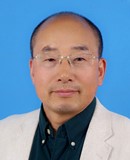
Prof. Youmin Chen
Professor
Henan University, China
|
Speech Title: On study of the atmospheric ozone with its distribution and variation
Abstract: Ozone is one of the trace gases in the atmosphere, and it plays an indispensable role in protecting the whole earth's ecosystem. In this study, the temporal and spatial distribution of the global ozone is comprehensively analyzed by using the reanalysis data of ERA-Interim from the European medium range forecast center (ECMWF). The results clearly show that there is a significant concentrated distribution area of ozone in the stratosphere, which plays a role in protecting earth life. In contrary, the ozone on the surface of the Earth is harmful gas to living things, including human beings.
The Antarctic ozone content is relatively low in comparison with other area on the earth, and the decreasing trend is the most significant, which is bound to lead to the emergence of the Antarctic ozone hole. Through the global cooperation coordinated by United Nations Environment Programme, the man-made pollution emissions that destroyed stratospheric ozone has been effectively reduced or banned, which has successfully prevented the further development of the Antarctic ozone hole and even gradually restored the ozone content in the stratosphere.
|
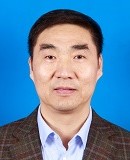
Prof. Tianpeng Gao
Professor
Dean of School of Biological & Environmental Engineering of Xi'an University, China;
Director of mining area pollution control and ecological restoration engineering research center of Gansu province, Lanzhou City University
|
Speech Title: Ecological Remediation Technology for Pollution Removal of Heavy Metals and Petroleum by Plant, Microorganisms in Mining Areas
Abstract: Mining has caused ecological damage along with widespread soil and watershed pollution. For over 10 years, by screening a variety of super-enriched native plants and a variety of organic acid-producing microorganisms, and applying purpose-specific genetic modifications to the plants and microorganisms, our team carried out plant-microbial combined remediation and bioleaching of heavy metal pollution in mining areas in the north of the Qilian Mountains and the south of the Qinling Mountains. The results showed that the soil heavy metal distribution pattern changed significantly before and after drenching, and the soil enzyme activity and fertility level were improved. For different types of metal mining sites, we used "one bank, one policy" heavy metal pollution treatment and ecological remediation, while the technology was also applicable to other heavy metal contaminated sites in situ remediation, with broad application prospects.
|
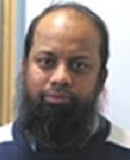
Dr. Monzur Imteaz
Associate Professor
Head, Urban Environmental and Transport Systems
School of Engineering, Swinburne University of Technology, Melbourne, Australia
|
Speech Title: Urban stormwater quality improvement devices: are we over-spending?
Abstract: Urban/rural stormwater quantity modelling has been well-researched and has achieved sufficient accuracy benchmark. However, modelling stormwater runoff quality (i.e. pollutants transport associated with stormwater) are relatively difficult and largely depends on catchment characteristics/land-uses. These can be estimated with acceptable accuracy provided pollutants transport equations are established through extensive field measurements. To ensure ecologically sustainable development, several stormwater treatment systems such as bioretention system, porous pavement, grass swale, wetland etc. have been proposed. Also, few attempts were made to develop models for such stormwater treatment systems. This presentation describes reliability of the models developed for pollutants transport from catchments and stormwater treatment through such systems.
Data on several field measurements from different constructed stormwater treatment systems (bioretention, grass swale and porous pavement) in Australia, Sweden, New Zealand and Scotland was collected from literatures. The experimental results were compared with estimations from a state-of-the-art model. In general, it has been found that model can simulate flow conditions with good accuracy, however model’s predictions on the removal efficiencies of Total Suspended Solids (TSS), Total Phosphorus (TP) and Total Nitrogen (TN) are varying and not satisfactory. A summary of model’s overall capability on simulating stormwater treatment efficiencies for different treatment measures is shown. Nonetheless, such model can be used to design optimum size of any treatment system through life-cycle costing analysis, example of which has been also elaborated.
|
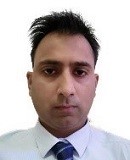
Dr. Muhammad Jawad Sajid
Associate Professor
Xuzhou University of Technology, Xuzhou, Jiangsu, China
|
Speech Title: The equitable distribution of the burden of carbon emissions mitigation among industries and final consumers
Abstract: The keynote speech focuses on the responsible redistribution of carbon emissions among various stakeholders, such as intermediate industrial producers (inter-sectoral exporters), industrial purchasers (inter-sectoral importers), and end-users. The speech will, in particular, examine the use of intermediate industrial carbon linkages and final demand (household, government, capital formation, and trade) embedded emissions for an equitable distribution of carbon emission responsibility among various key stakeholders. The input-output model, the hypothetical extraction method (HEM) and the hypothetical extraction of final demand method (HEOFD) will be considered to redistribute the burden of carbon emissions between industrial carbon producers and two types of consumers, namely industrial and final consumers.
Our speech is critical for policymakers to consider when making sectoral-level decisions that are based on a fair and equitable allocation of sectoral CO2 emissions responsibility. Furthermore, this keynote speech can help researchers better understand the relatively new concepts and methodologies for redistributing carbon emissions responsibilities among various intermediate industrial and final demand stakeholders.
|
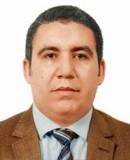
Dr. Mohamed A.E. AbdelRahman
Associate Professor
Division of Environmental Studies and Land Use, National Authority for Remote Sensing and Space Sciences (NARSS), Egypt
|
Speech Title: Potentiality of Geomatics for Assessment Climate Change and Anthropogenic Impacts on Soil in-North Delta, Egypt
Abstract: The majority of the Nile Delta's farmed land is consisting of old dark lands of alluvial soils with a texture ranging from heavy clayey to clay. The most prevalent major causes impacting land degradation in the delta include salinity, water logging, and seawater intrusion, as well as pollution, nutrient depletion, and population encroachment. Irrigation water, shallow water tables and water logging, and seawater intrusion into the water table and surface soils are the only three significant sources of dangerous salts in Nile Delta soils. The agriculture water consumption may be calculated through available EvapoTranspiration (ET) models, or using Machine Learning (ML) algorithms to predict these relations from the satellite data and the available in-situ measurements. According to the study, salty, saline-sodic, and sodic soils make up around 35% of the delta soils, putting the remaining areas at risk due to soil salinity increase. The agricultural production of the Nile Delta is severely limited due to degradation issues.
As a result, defining the forms of soil deterioration caused by natural pedological processes is necessary. 100 soil profiles were dug, soil samples were collected and examined, and soil classification was determined based on soil physiographic units. Many probable degradation pathways were discovered, according to the findings (soil compaction, water logging, salinization and sodification). Soil sealing was identified as one of the major causes of land degradation in the area, and a fuzzy model was developed to calculate the changes in land use and land cover over the last three decades in order to quantify the land degradation induced by soil sealing. Inappropriate agricultural practises were caused by land degradation, which was mostly due to the absence of conservation monitoring, poor timing of heavy machinery, over watering, and human intervention in natural drainage.
|
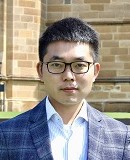
Dr. Yongze Song
RGS Fellow (Royal Geographical Society, UK), Lecturer and Doctoral Supervisor
Curtin University, Australia
|
Speech Title: Advanced Spatial Models for Geographical Factor Exploration
Abstract: Geographical factor exploration is one of the primary objectives in geo-referencing. In the geo-referencing, an essential task is to determine spatial associations between dependent variables and independent variables of potential factors. The spatial associations are generally constructed using two categories of models: aspatial models and spatial models. The common aspatial models consist of linear or nonlinear regression, and machine learning algorithms. The spatial models can be developed based on the characteristics of spatial dependence and heterogeneity. In this talk, a few advanced spatial models will be introduced for exploring geographical factors and spatial prediction. The models include optimal parameters-based geographical detectors (OPGD), interactive detector for spatial association (IDSA), segment regression kriging (SRK), wavelet geographically weighted regression (WGWR), etc. Correspondingly, open-access software for performing the models will be introduced.
|
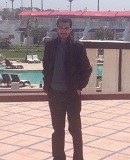
Dr. Soufiane Haddout
Ibn Tofail University, Kenitra, Morocco
|
Speech Title: Water issues in developing countries: Management and challenges for the future
Abstract: The water resource in developing countries is necessary for the development of human societies. This development, mainly in the industrial and agricultural sectors, is being increasingly affected by the lack of water resources at many levels. Lack of water is considered as a limiting factor of socio-economic development of a country. Water covers about two-thirds of the earth's surface. Rivers and lakes form ~0.3% of the world's freshwater and are considered the major water source for human use and consumption. The focus of this presentation is the issues regarding water development in
developing countries; and their management and challenge. This problem is especially acute in the rural areas. In most of the rural areas of developing countries, people often use buckets or small containers for washing dishes and hands, expending as little as 1litre per person for washing their hands.
|